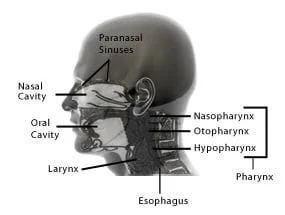Sleep Apnea Surgery

Sleep apnea is a common sleep disorder that involves repeated breathing interruptions during sleep that may occur hundred of times each night as a result of structural abnormalities or brain malfunctions. This condition affects about 18 million people of all ages in the US with a risk of many serious complications. Fortunately, most cases of sleep apnea can be effectively diagnosed and treated.
There are two main types of sleep apnea: obstructive and central. Obstructive sleep apnea is the more common form of this disorder and involves a blocked or collapsed airway during sleep that may result in breathing abnormalities. Central sleep apnea is less common and involves a malfunction in which the brain doesn't send the proper signals to control breathing during sleep.

Obstruction Sleep Apnea is usually aimed at treating:
1. Nasal Obstruction
- Septoplasty
- Submucosal Reduction Turbinates
Nasal obstruction is usually caused by a deviated or crooked septum or enlarged tissues (turbinates) within the nose. A septoplasty is an operation to correct a deformity of the partition (the septum) between the two sides of the nose. A turbinectomy is the surgical removal of an abnormally enlarged turbinate from inside the nose to improve breathing. A turbinectomy can be done by removal of tissue (sub-mucus resection) or by radio-frequency (coblation). The goals of nasal airway surgery include the following: To decrease nasal obstruction and improve airflow through the nose, to control nosebleeds, to enhance visualization of the inside of the nose, to relieve nasal headaches associated with swelling of the inside of the nose, and to promote drainage of the sinus cavities. Nasal airway surgery is done through the nostrils without the need for external incisions.
2. Oral Obstruction
-
Tonsillectomy -
Tonsillectomy and Adenoidectomy

- Uvulopalatopharyngoplasty (UPPP) -
During normal breathing, air passes through the throat on its way to the lungs. The air travels past the soft palate, uvula, tonsils, and tongue. When a person is awake, the muscles in the back of the throat tighten to hold these structures in place, preventing them from collapsing into the airway. During sleep, these structures can fall into the airway, causing snoring and obstructive sleep apnea. Uvulopalatopharyngoplasty with or without tonsillectomy are surgical procedures designed to circumvent this sleep related collapse of these structures.
- Base of Tongue Radiofrequency Coblation
3. Hypopharyngeal Obstruction
- Genioglossus Advancement -
The tongue often collapses in the back of the throat during sleep, obstructing the airway and causing symptoms of sleep apnea. Repositioning the genioglossus, the primary muscle of the tongue, can prevent it from collapsing during sleep and allows for an enlargement and stabilization of the airway.
During the genioglossal advancement procedure, an incision is made in the lower lip, and the chin muscle and surrounding tissues are moved out of the way. Small incisions are made within the lower jaw to remove a rectangle of bone and move it forward, securing it with a titanium screw. The muscles and tissues are then restored in place and the incision is closed with stitches. This procedure is performed under general anesthesia and requires special care after surgery, including a liquid diet and sleeping with your head at an elevated angle for a few days.
- Hyoid Suspension -
Hyoid suspension is a surgical procedure performed to treat obstructive sleep apnea by securing the hyoid bone, the U-shaped bone in the neck, in place instead of allowing it to move around freely. Movement of the hyoid bone increases the risk of airway blockage during sleep and causes symptoms of sleep apnea.
Hyoid suspension involves creating an incision in the neck (within the natural crease) and detaching two of the upper tendons on the hyoid bone and advancing to a proper position before stabilizing the hyoid bone in place by attaching it to the thyroid cartilage with stitches. This procedure takes less than an hour to perform and does not cause any long-term voice changes or other complications in most cases.
